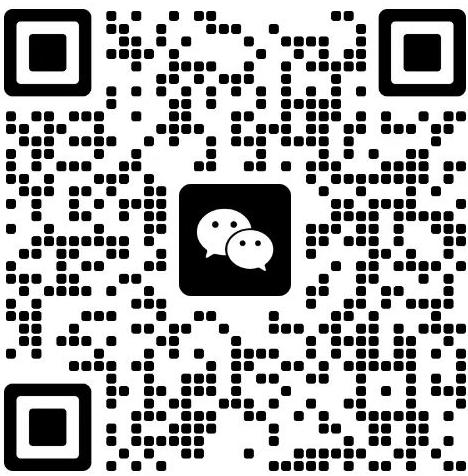Guided Wave Radar Level Transmitter: Enhancing Accuracy and Efficiency
Introduction
In today's rapidly evolving industrial landscape, accurate and efficient level measurement is of paramount importance. Industries across sectors such as oil and gas, chemical, power, and water treatment rely on precise level measurement to optimize their processes and ensure safety. One technology that has emerged as a reliable solution is the Guided Wave Radar (GWR) level transmitter. In this article, we will explore the capabilities and benefits of GWR level transmitters and how they can revolutionize level measurement in various applications.
What are Guided Wave Radar Level Transmitters?
What is Guided Wave Radar?
Guided Wave Radar (GWR) is a level measurement technology that utilizes the principles of time-domain reflectometry to accurately determine the level of substances within a vessel. It operates by sending an electromagnetic wave along a probe or waveguide and measuring the time it takes for the wave to travel down the probe and reflect back from the surface of the medium being measured.
The concept behind GWR is based on the principle that the electromagnetic wave encounters a change in impedance when it transitions from the waveguide to the substance being measured. This impedance change causes a portion of the wave to be reflected back towards the source. By analyzing the time delay between the transmitted and reflected waves, the GWR system can calculate the level of the substance.
The Advantages of GWR Level Transmitters
GWR level transmitters offer numerous advantages over traditional level measurement techniques. Here are some key benefits:
GWR technology offers several advantages over traditional level measurement techniques. One key advantage is its ability to provide highly accurate measurements even in challenging process conditions.
GWR is not affected by factors such as turbulence, foam, or vapor, which can often disrupt the accuracy of other measurement methods.
Additionally, GWR level transmitters are versatile and can be applied to a wide range of liquids, slurries, and solids. They can handle diverse mediums, including corrosive chemicals and sticky substances, making them suitable for various industries.
Another significant advantage of GWR technology is its reliability and durability. GWR level transmitters have no moving parts, which minimizes the risk of mechanical failure. They are designed to withstand harsh environments, vibrations, and temperature fluctuations, ensuring long-term performance and reducing maintenance costs.
Furthermore, GWR provides continuous level measurement, enabling real-time data for accurate inventory management, process optimization, and preventive maintenance. This continuous monitoring ensures that the process remains within optimal levels, reducing the risk of overflow, underflow, or inefficient utilization of resources.
In terms of installation, GWR level transmitters are relatively simple to install and require minimal calibration. Their compact design allows for easy integration into existing processes, minimizing downtime during installation.
Guided Wave Radar level transmitters have proven to be a reliable and accurate solution for level measurement across various industries. Their high accuracy, versatility, reliability, and ease of installation make them a preferred choice for optimizing processes, ensuring safety, and enhancing efficiency in industrial applications.
Applications of GWR Level Transmitters
GWR level transmitters find applications in a wide range of industries due to their versatility and accuracy. Some notable applications include:
Oil and Gas Industry
In the oil and gas sector, GWR level transmitters play a critical role in measuring the levels of crude oil, refined products, and liquefied gases in storage tanks. Accurate level measurements are essential for inventory management, custody transfer, and ensuring compliance with safety regulations.
Chemical Processing
GWR level transmitters are widely used in chemical processing plants for monitoring liquid levels in storage tanks, reactors, and distillation columns. Precise level measurement enables efficient process control, minimizing the risk of overflow or underflow, and ensuring the optimum utilization of resources.
Water and Wastewater Treatment
In water and wastewater treatment facilities, GWR level transmitters provide reliable level measurements in tanks, reservoirs, and sedimentation basins. This data is crucial for efficient operation, managing water resources, and ensuring compliance with environmental regulations.
Power Generation
GWR level transmitters find applications in power plants for measuring levels of water, fuel, and chemicals in boilers, condensers, and storage tanks. Accurate level measurement helps optimize fuel consumption, prevent equipment damage, and improve overall plant efficiency.
Choosing the Right GWR Level Transmitter
Selecting the appropriate GWR level transmitter for a specific application requires careful consideration. Factors such as process conditions, medium properties, vessel design, and required accuracy should be taken into account. Consulting with an experienced GWR level transmitter manufacturer or supplier is recommended to ensure the best fit for your needs.
1. Process Conditions: Evaluate the specific conditions of your process, such as temperature, pressure, and the presence of corrosive substances. Ensure that the GWR level transmitter you choose is compatible with these conditions and can withstand any harsh environments or extreme operating parameters.
2. Medium Properties: Consider the characteristics of the substance you will be measuring, including its conductivity, dielectric constant, viscosity, and density. Different GWR level transmitters may be better suited for different types of liquids, slurries, or solids. Ensure that the transmitter is capable of accurately measuring the specific medium in your application.
3. Vessel Design: Assess the design of the vessel or tank where the level transmitter will be installed. Factors such as the shape, size, and material of the vessel can impact the performance of the GWR level transmitter. Some transmitters may have limitations or requirements based on vessel geometry, so choose a transmitter that can accommodate your specific vessel design.
4. Accuracy Requirements: Determine the level of accuracy required for your application. GWR level transmitters can provide different levels of accuracy, and it's important to choose one that meets your specific needs. Consider factors such as measurement range, resolution, and the precision required for your process control or inventory management.
5. Output and Communication*: Consider the output and communication capabilities of the GWR level transmitter. Determine if the transmitter provides the required output signal (such as analog, digital, or relay) compatible with your control system. Additionally, assess the communication protocols supported by the transmitter, such as HART, Modbus, or Foundation Fieldbus, to ensure seamless integration with your existing system.
6. Installation and Maintenance: Evaluate the ease of installation and maintenance of the GWR level transmitter. Consider factors such as mounting options, wiring requirements, and calibration procedures. Choose a transmitter that is easy to install and maintain, minimizing downtime and reducing the overall cost of ownership.
7. Supplier Expertise and Support: Partner with a reputable supplier or manufacturer who has experience in GWR level measurement technology. They can provide guidance and support in selecting the right transmitter, offer technical assistance during installation and commissioning, and provide ongoing maintenance and support services.
By carefully considering these factors and consulting with experts in the field, you can choose the right GWR level transmitter that will accurately and reliably meet the specific requirements of your application.
Conclusion
The Guided Wave Radar (GWR) level transmitter is a highly reliable and accurate technology that offers significant benefits in level measurement. Its versatility, robustness, and ease of installation make it a preferred choice in various industries, including oil and gas, chemical processing, water treatment, and power generation. By investing in a GWR level transmitter, businesses can enhance process efficiency, optimize inventory management, and improve overall operational safety. Stay ahead of the competition by embracing this advanced level measurement solution.



